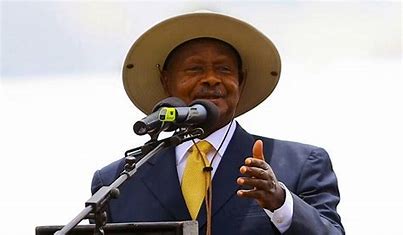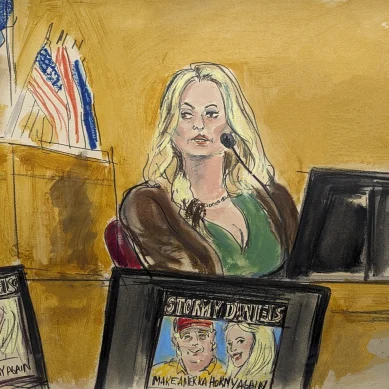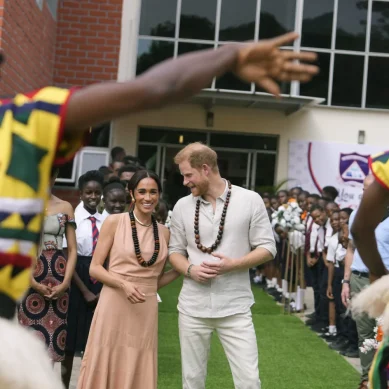
There are three words in this title I want to link in order to generate new knowledge on Uganda that may, or should stand, the test of time for future generations of Ugandans to benefit from as they reflect on and try to rebuild their country from the ruins our generation has exacted on it.
Those words are apartheid, governance and evidence connected in one spectrum of analysis. When we say governance in Uganda is of the apartheid style, we must be ready to provide the evidence.
The thesis statement is: Governance in Uganda is of the Apartheid style
But what is apartheid?
All humanity is one with natural races, natural ethnicities and natural differences and similarities. However, apartheid was created by man of the white race to accentuate differences between the races and ethnicities in order to dominate the black race racially, ecologically, politically, economically and socially.
Thus, apartheid was an ecological, racial, political, economic and social system in South Africa during the era of white supremacists who saw themselves as a pure race and ruled the country as a white minority. The supremacists enforced racial discrimination ecologically, constitutionally, institutionally, structurally, functionally and administratively against non-whites, mainly focused on skin colour and facial features. The whites who championed the practice of discrimination were those who were called “white Afrikaaner nationalists”.
All governance in all spheres of human endeavour was Apartheid driven. It was governance that constitutionalised and institutionalised the exclusion principle and de-constitutionalised and de-institutionalised the inclusion principle. The governed were excluded from viable, productive ecology, resources and opportunities and had their futures distorted.
The Afrikaaner nationalists innovated a set of ideas about society, social organisation, the economy, culture and language. Under apartheid, the creole language, Afrikaans, which evolved in the 19th century during colonialism in South Africa, became the language of oppression in service of the historical divide and rule policy of the white Afrikaaner nationalists. Afrikaaner language, however, developed from many languages, including Portuguese, Malay, Indonesian and several indigenous languages; but it had its main roots in Dutch.
It was highjacked by the white Afrikaaner Christian nationalists using education, propaganda and the media. Despite the highjack, it proved to be more than the oppressor’s language. It is spoken by 6 out of 10 of the almost 7m Afrikaans speakers in South Africa who are blacks. As the population of blacks grows, more blacks will speak it.
Apartheid as a type of governance is traceable to 1913 when the South African Legislature passed the Land Law 1913, three years after its freedom from colonial rule. This law was the basis of sowing seeds of territorial segregation, forcing Africans to live in reserves, making it illegal for them to work as sharecroppers. The result was ecological segregation, assigning blacks to ecologically poor areas while whites captured the ecologically productive areas.
Constitutionalised, institutionalised apartheid, however, took root in South Africa in 1948, a year before I was born, when White Afrikaners introduced a constitution recognising four distinct ethnic groups: Whites, Asians, Coloured and Natives (Blacks). The Natives included many indigenous groups such as Zulu and Xhosa. Together, they were collectively subjects of supremacist prejudice, oppression, dispossession, displacement, exclusion and maximised divide and rule. The constitution banned interracial marriages in favour of the small white supremacist ethnic group purity. Education was segregated, with all white universities and schools.
African political organisations, especially the African National Congress (ANC), were banned and any contact with the population militarily prevented by militarised police. Any demonstrations were brutally quashed or crushed. African political leaders were either imprisoned or killed. A famous African leader who was imprisoned for 27 years on Roben Island, far away from the population, was Nelson Madiba Mandela. He became the immediate post-apartheid president of South Africa. A Black African who was killed for his conscience was Steve Biko in 1976. Besides, demonstrations were outlawed
In the Soweto riots of June 1976 by school children, an estimated 176 children were gunned down, but other sources estimate that as many as 700 were killed by the militarised racist police and military. The racist regime was a politico-military regime, in which the instruments of coercion ( police and army) were fused and jointly reigned terror on the Black population.
Apartheid governance of South Africa , which fully started in 1949, continued until 1993 when a new Constitution 1993 outlawed apartheid, took effect in 1994, enfranchised Blacks, and produced a coalition government, with Black majority rule and Nelson Madiba Mandela as the first Black president. He did not overstay the constitutional presidential term of five years, which was unusual in Africa. He found President Tibuhaburwa Museveni ruling Uganda, and he is still ruling, as ethnically as the White supremacists did.
By 2011 the Majority Black majority constituted 76.4 per cent of the South African population. Whites were 9.1 per cent, Coloureds were 8.9 per cent, Indians were 2.5 per cent and other/unspecified constituted 0.5 per cent. It is clear that until the minority White supremacists passed power over to the Black majority, the Blacks were unjustifiably marginalised from power. Without power the majority Africans could not access basic necessities of life either. They were slaves in their own country and a source of cheap labour for the White supremacists.
But does Apartheid have to be practised by whites only? No. Under majority rule, violent ethnic cleansing of White Farmers was reported by BBC News on September 1, 2018. Many Whites have been fleeing South Africa since the dawn of Black majority rule. In 2020 it was expected that 115,000 whites would flee South Africa by 2021.
There are many people – Ugandans and non-Ugandans – who believe that with the capture of the instruments of power by the National Resistance Movement NRM)/National Resistance Army (NRA) in 1986, an Apartheid-style governance has been taking root in Uganda. For example, Prof Amii Omara-Otunnu ( 2014), in his pioneering article “Confronting Museveni’s Apartheid Style Regime in Uganda” (www.backstarnews, August 22, 2014), has given some evidence that President Museveni has introduced apartheid style governance in the country.
It must be emphasised that the racists of South Africa practised segregation in terms of ethnicity, land ownership, political association, education, access to power (and, therefore, decision-making), access to employment (in army, police, civil service, industry, and business and commerce) access to resources and access to opportunities.
In Uganda, these facets of segregation seem to be manifesting and getting intensified supersonically, with the disappearance of the public state and its replacement by the deep state unelected people superseded by a small ethnic group of closely related people by kith and kin.
Uganda has four natural ethnicities: Bantu, Nilotes (Nilotics), Nilo-Hamites and Hamites. The Bantu are the Baganda, Banyankole (the Bairu), Basoga, Bakiga, Batoro, Banyoro, Bagisu, Bagwere, Bafumbira, Basamia, Bakonjo and Bamba.
Nilotics include the Alur who resulted from the intermarriage of the Okebu and the Lendu; the Labongo (located in Acholi), Langi, Acholi, Padhola, and Jonam. All these are collectively known as Luo).
Nilo-Hamites are the Teso, Karimojong, Kumam, Kakwa, Sebei, Pokot, Labwor, Tapeth, Lugbra, Madi, and Lendu. Hamites are found in Teso, Lango and Kumam.
The Bahima are wrongly cast as Bantu-speaking but are culturally related to migrant Batutsi now dominating governance in Uganda, although they speak Runyankore language (the language of the Bantu Bairu) very well after nearly 500 years in the former Kingdom area of Ankole, which they formed. They have been called the Hamites (Cushites or Cushitics) of Uganda.
They entered Uganda from Ethiopia and the Banyoro called them Bahuma because when they talked they produced long sounds like humming bees. They stayed in Uganda as Bahima and were assimilated linguistically by the indigenous people (i.e, Basita, Banyambo, Batwa and Bahutu) whom they dubbed Bairu (slaves) and ruled over as the Kingdom of Ankole. The Batutsi in Ankole and Kigezi are all immigrant Batutsi. Those in Kigezi are a result of a back migration from Rwanda President Tibuhaburwa Museveni has told Ugandans that he belongs to the Basita.
Those immigrants from Ethiopia who continued to move southward settled in Burundi and Rwanda as Tutsi, dominated the Hutu and Twa they found there, but were assimilated linguistically by the Hutu.
The concept Bachwezi is today wrongly applied to present-day Bahima and Batutsi by the Batutsi governors of Uganda, eager to rule the country perennially and to create a ruling supremacist caste and conceal their exogenous roots.
However, Bachwezi became extinct, never to rise again, although some conservative people still believe they exist in Ankole, Buganda and Busoga. The Bachwezi are credited with the ancient Kitara Kingdom, which included areas of central, western and southern Uganda, northern Tanzania, western Kenya and eastern Congo. Those who want to have Chwezi in their minds, could be interested in establishing Tutsi/Hima hegemony over Uganda and other former Kitara Kingdom areas, mystifying power and popularising the idea that some people are supposed to rule and others are supposed to be ruled or to service the power of those supposed to rule monarchically.
It would not be surprising if East Africa was conceived in Kitara terms. Otherwise, extinct Bachwezi are believed to have been the ancestors of Bahuma, Bahima, Batutsi and Bahinda. The Bantu people that the Bahima found in Ankole and called Bairu (slaves) were Bantu, namely: Basita, Banyambo, Bahutu and Batwa.
When people talk of Apartheid Style governance in Uganda, they do not only articulate that it was introduced by the NRM/A of President Tibuhaburwa Museveni, but it is what has helped the president to exact an iron hand on Uganda’s ethnic groups and 55 indigenous groups for more than 36 years. The Uganda Constitution 1995 is cited as having disempowered the organised cultural groups of Uganda politically, weakened them culturally, divided them along many facets and rendered them vulnerable to Apartheid style governance.
The single most factor driving apartheid-type governance in Uganda is supreme presidency in which the Constitution 1995 invested all power and authority to do anything conceivable under the sun. The presidency has eventually been personalised and the long-reigning President Tibuhaburwa Museveni, has used it to push his ideas on land, education, health, agriculture, fisheries, energy, administration, employment, et cetera.
The Constitution 1995 dispossessed the people of Uganda of their resources belowground, making them government-owned. Ultimately, the small ethnic group of people in power is accessing and exploiting resources at the expense of the rightful owners. Besides, the policies, laws and practices of government are such that they are encouraging the dispossession of and displacement of indigenous Ugandans from their land by mostly people previously nomadic pastoralists, belonging to a small ethnic group in power or connected to power.
Many dispossessed and displaced are now like a floating population, unattached to their ancestral lands. This is like what happened in the defunct South Africa.
Segregation in education began to take root as soon as President Tibuhaburwa Museveni enforced Universal Primary Education (UPE) in 1997, followed by Universal Secondary Education (USE), without corresponding efficient equipping of the schools with necessary materials, or just salaries for teachers. Teachers have to engage in multiple types of work to make ends meet. Both UPE and USE are very poorly funded.
In 2015, government increased funding from Ush7,000/- to Ush10,000/- per pupil (the Daily Monitor, April 21, 2015 updated January 1921). According to the Independent of October 7, 2020 each student is allocated 40,000/- and 85,000/- at O- and A- level respectively, in addition to a block grant of Ush100,000/.
Teachers have had to do multiple jobs to make ends meet. The poor funding of education and inadequate salaries of teachers in public schools, have contributed to the meteorically falling quality of education and rising desertion of teachers. This is an education crisis affecting the absolute majority of pupils, students and parents, who are being denied quality education in their families.
It is also making many areas of indigenous groups and ethnicities fall behind in education and development. This is being compounded by President Tibuhaburwa Museveni’s introduction of privatisation in education. Those who can afford private education are increasingly those who belong to the ruling ethnic group or who are connected to it. There is rising drop out of pupils and students from government schools. Average primary school dropout rate is 45 per cent. Secondary school dropout rate was 18.2 per cent in 2013 and 37.2 in 2016. School dropout rates are believed to be much higher today.
Discrimination in funding students for higher education was seen when State House run the so-called president’s scholarship scheme. The absolute majority of those who benefited from the scheme were from western Uganda, but were not from the Bairu of Ankole or Bafumbira or Hutu of Kigezi. Many Ugandans believed the beneficiaries’ were Tutsi migrants who had adopted Ankole names.
Discrimination in employment is also a virulent cancer in Uganda. For example, virtually all of the top brass are from western Uganda. Most are from Ankole and mostly Tutsis from Rwanda and eastern Congo. Even most police commanders and resident district commissioners are from western Uganda, with no known roots in any cultural area of Uganda. This phenomenon could be one major reason why Dr Kizza Besigye persists in saying that the state in Uganda has been captured.
Most institutions and departments in government are headed by people from western Uganda and most likely by people either ethnically related to the First Family or connected to it. The Independent, owned by Andrew Mwenda, now a close associate of the First Family, published three articles, suggesting that power in Uganda and Uganda itself, are owned by the First Family, with others just helping it to rule: Family rule in Uganda: How the Museveni clan runs government (March 11, 2009); The dynamics behind Museveni’s family rule (March 18, 2009); and Museveni’s government family tree (March 25, 2008). This means, all decisions, including the national budget, are made by a small family, ethnically-oriented group, with extended tentacles of kin and kith.
There rest are people who do not belong simply service it to fulfil its aims in Uganda and elsewhere. Things like Bonna Baggawale, Operation Wealth Creation, Emyooga and Parish Development and even the national budget, have their roots in the Family circles. Even the discriminative, disparative salaries, poor salaries for crops, absence of minimum wage, conversion of politics into employment, with the political employee earning excessively high incomes compared to the professionals, have their roots in the Family resident in State House in Entebbe.
Besides, the decision of who should be treated abroad, away from the dilapidated hospitals of Uganda, starved of doctors, equipment and medicines, can only be made the President of Uganda, perhaps on the advice of family members.
For, example, the decision to Bantustanise Uganda, hand the coffee industry to a woman without capital or experience in the coffee industry, to destroy the natural forests in Kalangala for oil palm growing or to convert the Bugoma Game Corridor into a sugarcane plantation were family decisions. We cannot transfer the current crisis in education away from the first family because the decision to pay science teachers far higher salaries than Arts Teacher, Education Supervisors or Permanent Secretaries, with all its socially disruptive connotations.
Demonstrations, though not constitutionally banned, are politico-militarily banned. Those not endorsed by the President or the first family are crushed with maximum force. The demonstrations that seem to escape being crushed politico-militarily are those that do not involve movements of people with placards, but sit-down strikes, such as the current strike by primary school teachers, arts teachers and Uganda National Teachers Union (UNATU), following President Museveni’s decision to raise salaries of science teachers.
Threats by the President, prime minister and permanent secretary of ministry of education have not crushed the resolve of education workers to defeat instituionalised injustice and discrimination. The sufferers right now are of course pupils, students, parents and the entire education system which was only beginning to readjust to normalcy after two years of Presidential closure of the education system in particular and the whole country in general, to contain Covid 19. However, pupils, students, parents and teachers of private institutions were not so affected. Neither are they being affected in any significant way during the strike of teachers and UNATU.
What is happening now teaches us that we should allow systems and institutions to work; that it is dangerous to allow politics to pollute systems and Institutions; that discrimination hurts a nation; and that absolute power can benefit a family in power in the short-term but not the nation in the long-term. There are many examples to cite, but Libya and Zaire (now DRC) cannot escape being mention. Strongmen Gaddafi and Mobutu went down with their countries. respectively.
Politically, political parties of Indigenous Ugandans are proscribed illegitimately and illegally. Leaders of parties alternative to NRM cannot interact with the population politically, although the country is said to be under multiparty dispensation and democratic. If they try, they are hunted down. There are two laws that were designed by the NRM regime to purposely depoliticise, de-radicalise and de-socialise indigenous Ugandans and their Institutions in general and political parties in particular: The Sectarianism Law and the Public Order Management Act (2013).
The Sectarianism Law 1998 inactivates citizens, ensuring that they cannot take action on foreigners, mainly Banyarwanda, who were constitutionalised by the Uganda Constitution 1995 and have been grabbing everything owned by indigenous people – individually or collectively. This law is the one empowered the Indians to demand that they become one of the indigenous tribes of Uganda and for President Tibuhaburwa Museveni to say that he has no problem naming Indians as one of the tribes of Uganda. Indeed a precedent had been set by naming Banyarwanda who first arrived in the country in 1926.
Indians first arrived in Uganda in 1895 from Punjabi as 300 troops to join the colonial army. Another 40,000 Indians arrived from Punjabi to work as labourers on Kenya-Uganda railway. There are now aound 60,000 Indians in Uganda. Government has grabbed land for them to establish their enterprises, given them tax holidays and allowed them to repatriate their profits to their country.
We do not know if President Museveni also wants a tribe of Chinese in Uganda, but there are 10,000 illegal Chinese immigrants. The Daily Monitor of February 12 2016, reported that there are between 10,000 and 50,000 Chinese in Uganda. Many Ugandans think, believe and are convinced foreigners are better treated that the bona fide citizens are, and are marginalised as third rate citizens.
The Public Order Management Act 2013 was erected to regulate assemblies of especially Ugandans, in particular to regulate the exercise of the freedom to assemble and picket. The police has evoked it at every opportunity to contain assemblies and demonstrations of a political nature. But even religious, student and workers demonstrations and assemblies have been attacked by police and disbanded. Sometimes people have been killed, and many examples of fatalities can be cited.
The 2009 Buganda riots, following police prevention of the Kabaka’s visit to Kayunga claimed almost 30 lives. The Kasese massacre of by the army following the arrest of the Rwenzururu King, extinguished the lives of some 100 citizens, and the man who commanded the onslaught was promoted to a general by Museveni in appreciation. So far there has been no justice for the massacred, just like there has been no justice for the children of Soweto who were massacred by the Apartheid State Security Forces.
There are indications that when Ugandans become adequately conscientised, they may resort to demonstrations against apartheid style governance, which has led to their country being torn into unviable enclaves; to land being grabbed by people with roots cultural and biological roots outside the country; to discrimination in employment and salaries; to disparities in development and public services; to rising taxes and declining benefits to citizens; to unfair prices for crops; to declining health facilities; to preferential treatment of foreigners compared to citizens; et cetera.
According to Prof Amii Omari Otunnu (2014), President Tibuhaburwa Museveni treats Uganda as his personal estate, similar to the way King Leopold of Belgium treated the so-called Congo Free State. (Now DRC) in the late 19th century and early 20th century.
From what I have submitted, you will probably quickly discern no difference between the defunct apartheid South Africa (principally under white supremacist P. W. Botha, Jan Christiaan Heunis and de Klerk) and Uganda under President Tibuhaburwa Museveni.
If you discern no difference, then President Tibuhaburwa Museveni’s style of governance is a reincarnation of apartheid that was conquered by time, the ultimate judge, in the early 1990s, just as the NRM/A was making the Uganda Constitution 1995, which is more or less the blueprint for Apartheid style governance in Uganda.
- A Tell report / By Prof Oweyegha-Afunaduula, a former professor in the Department of Environmental Sciences of the Makerere University, Uganda











